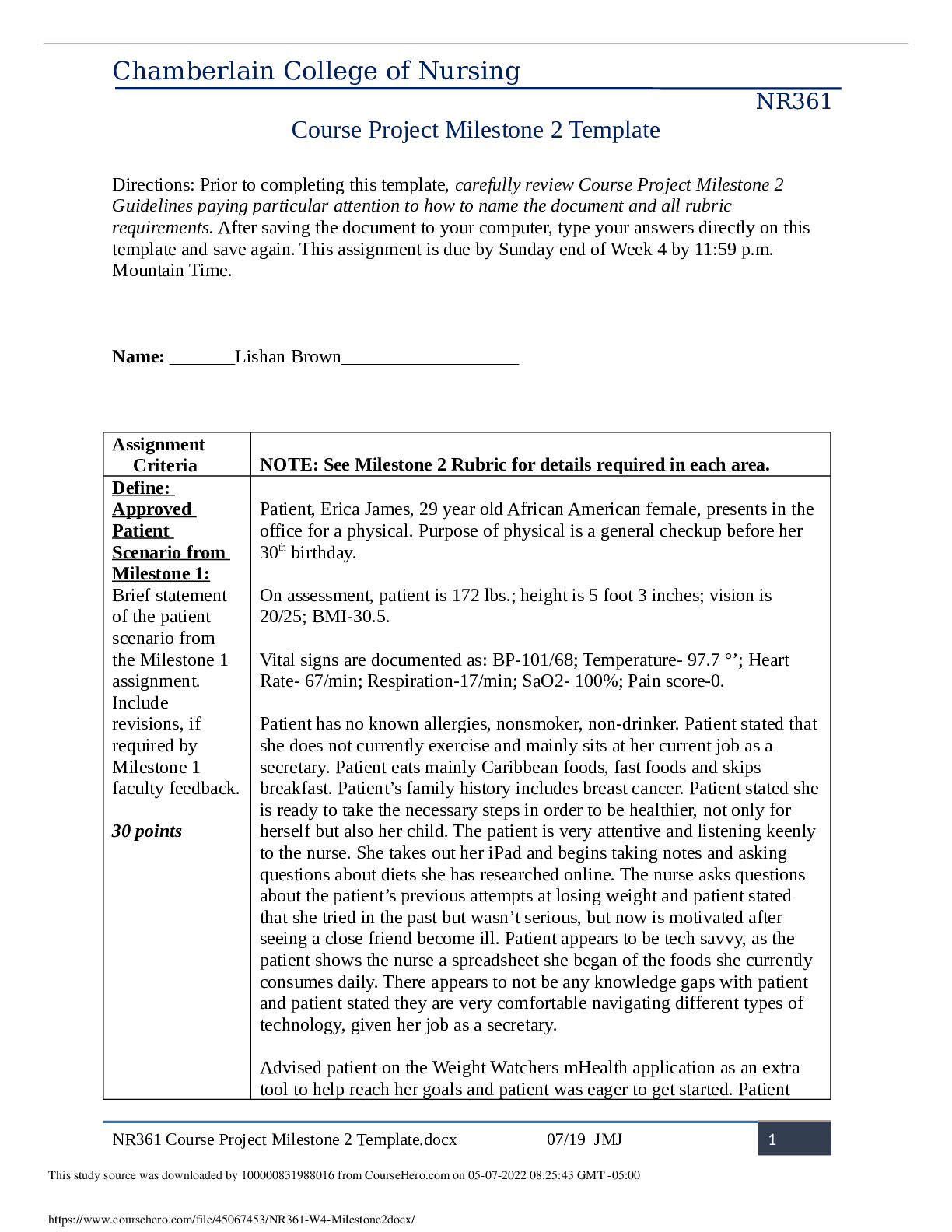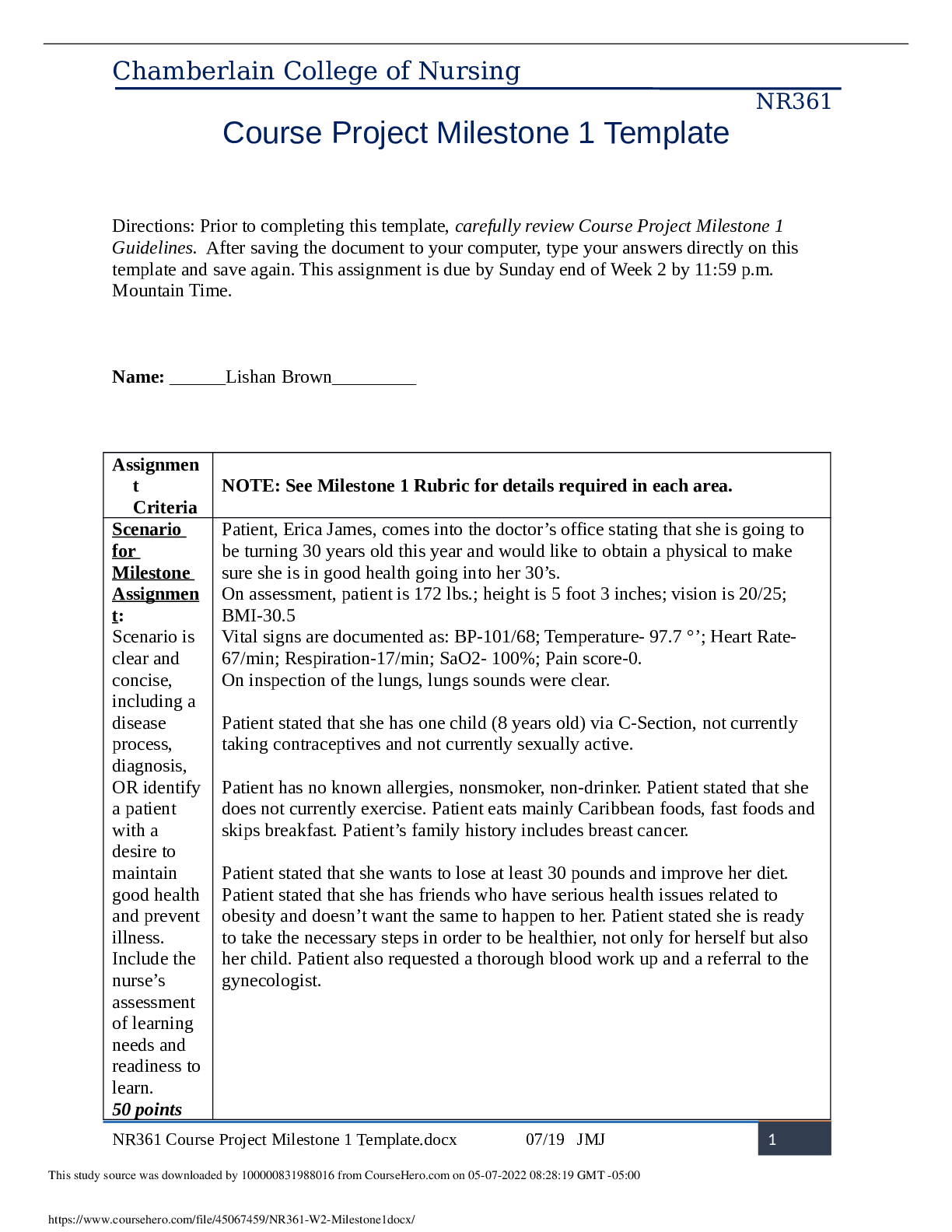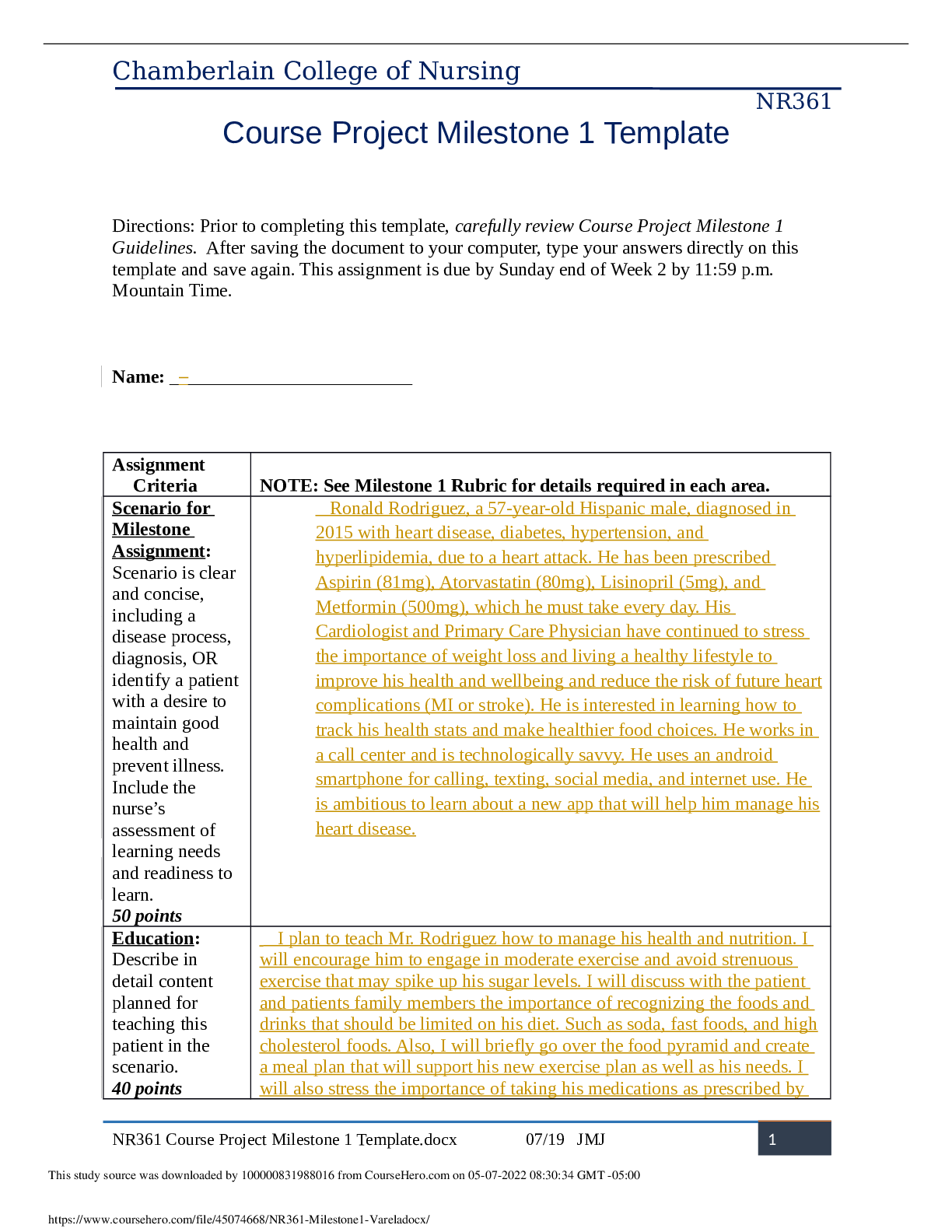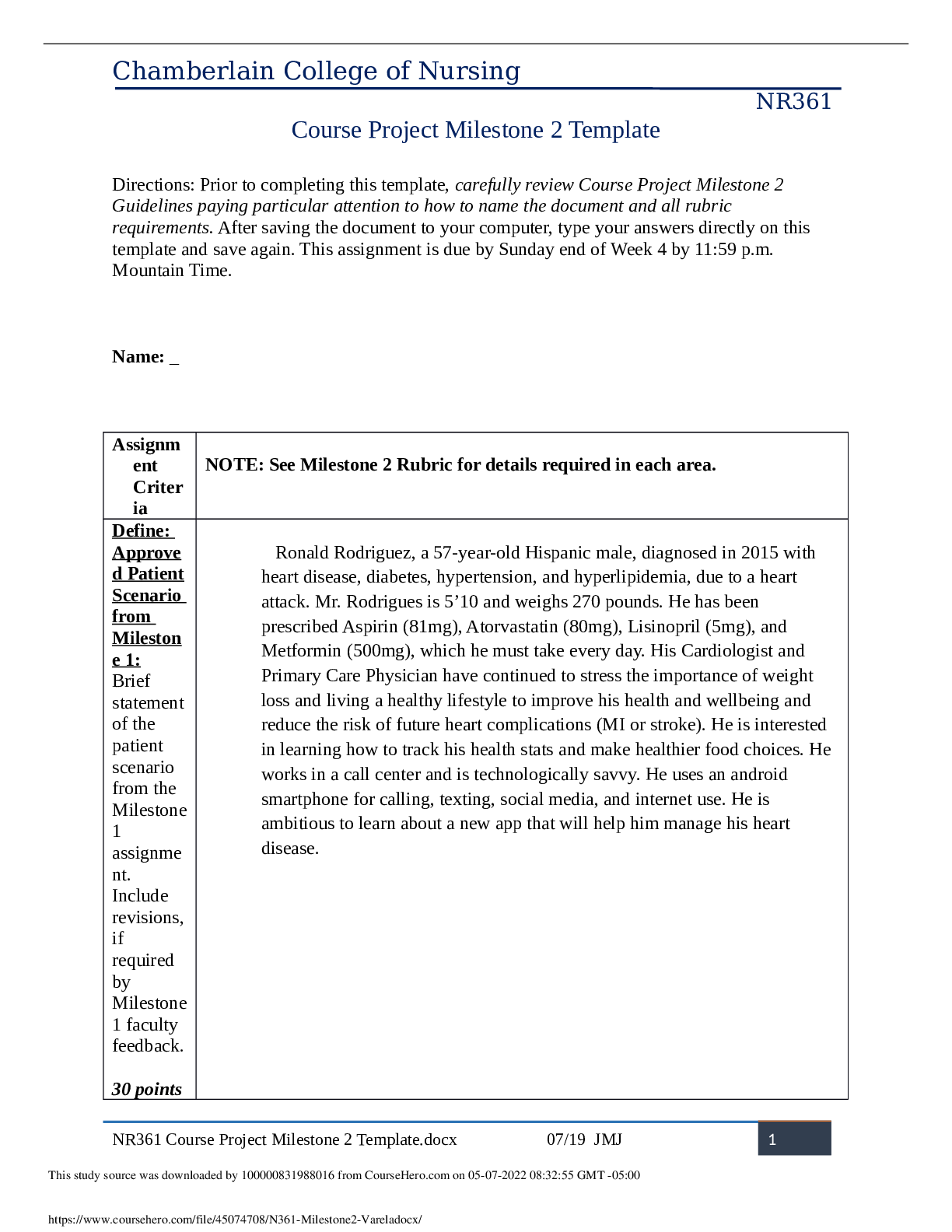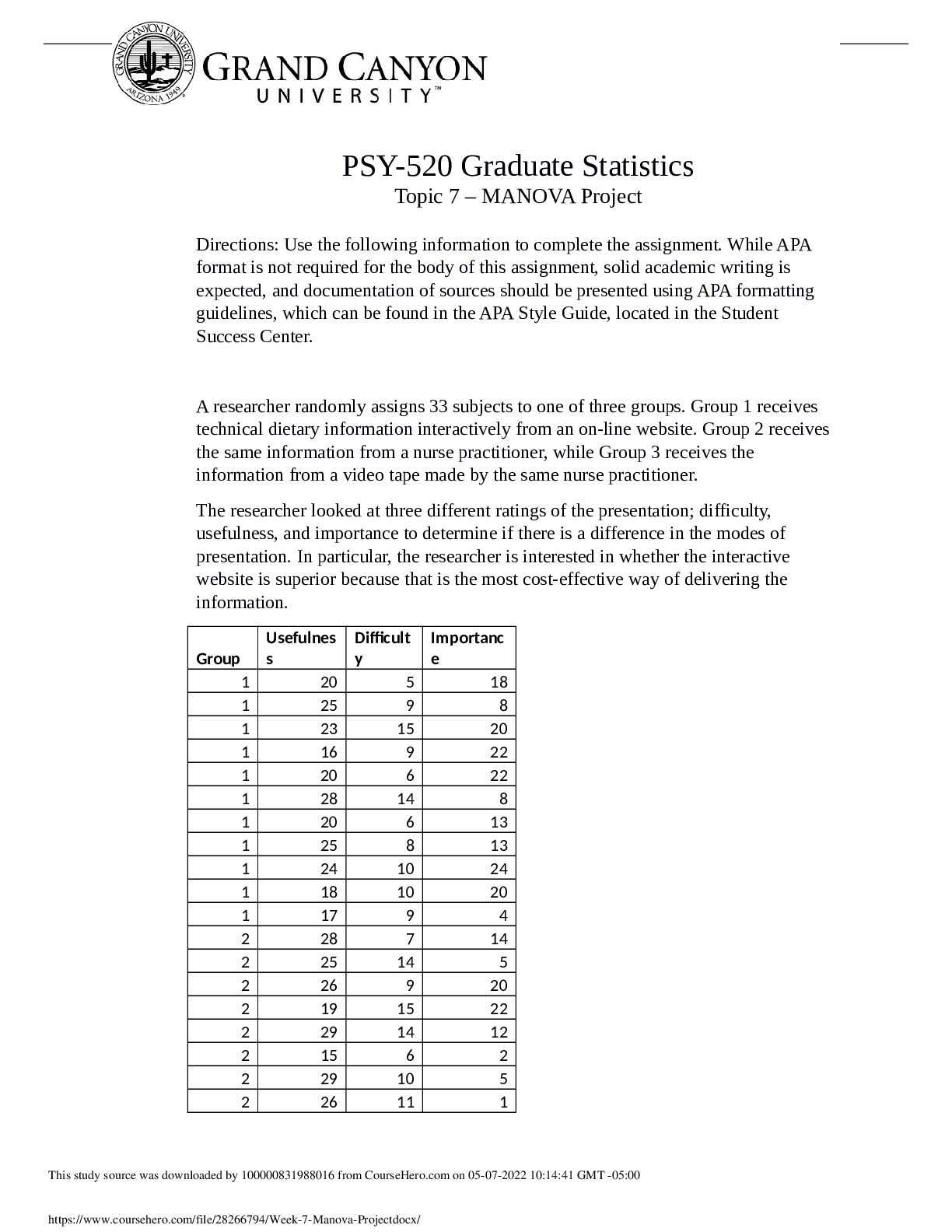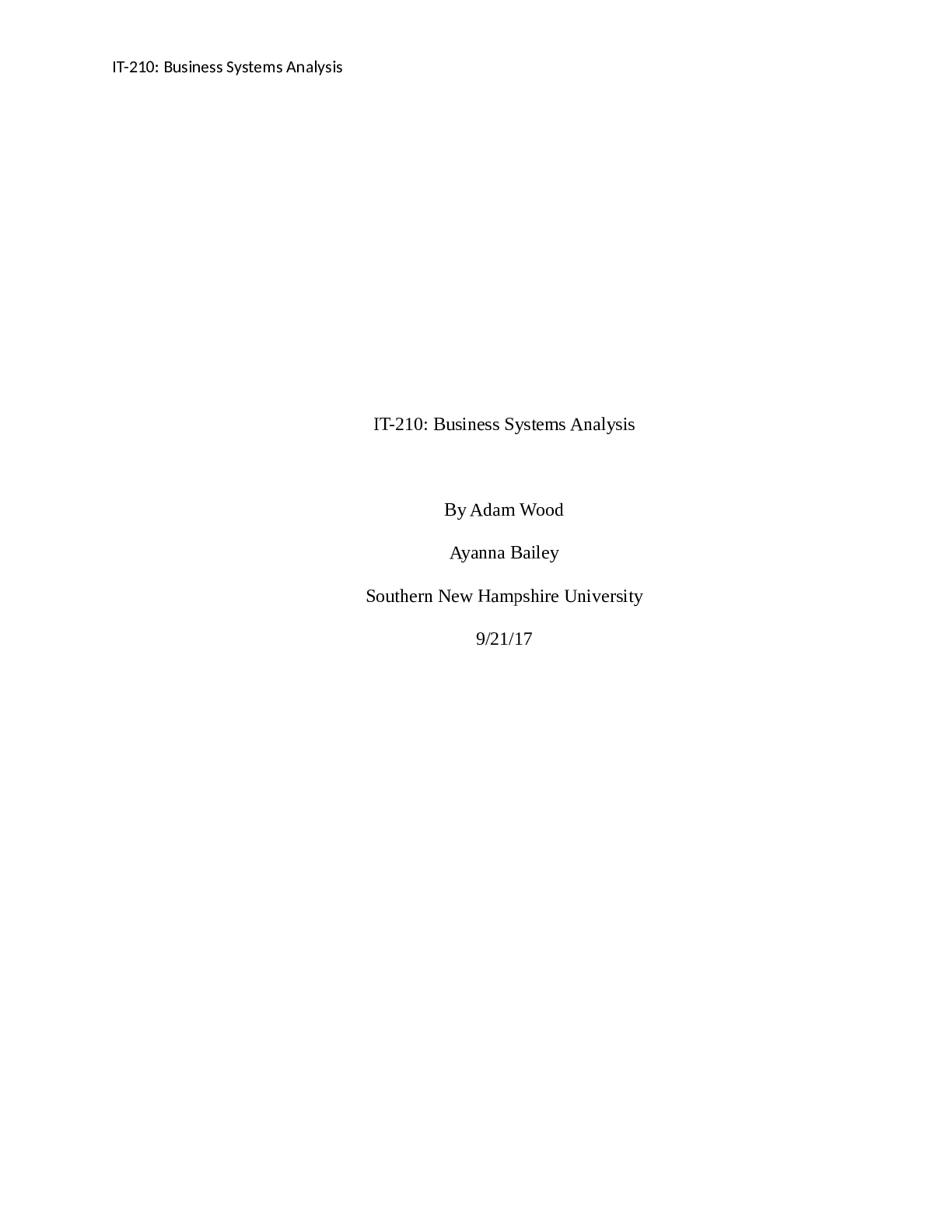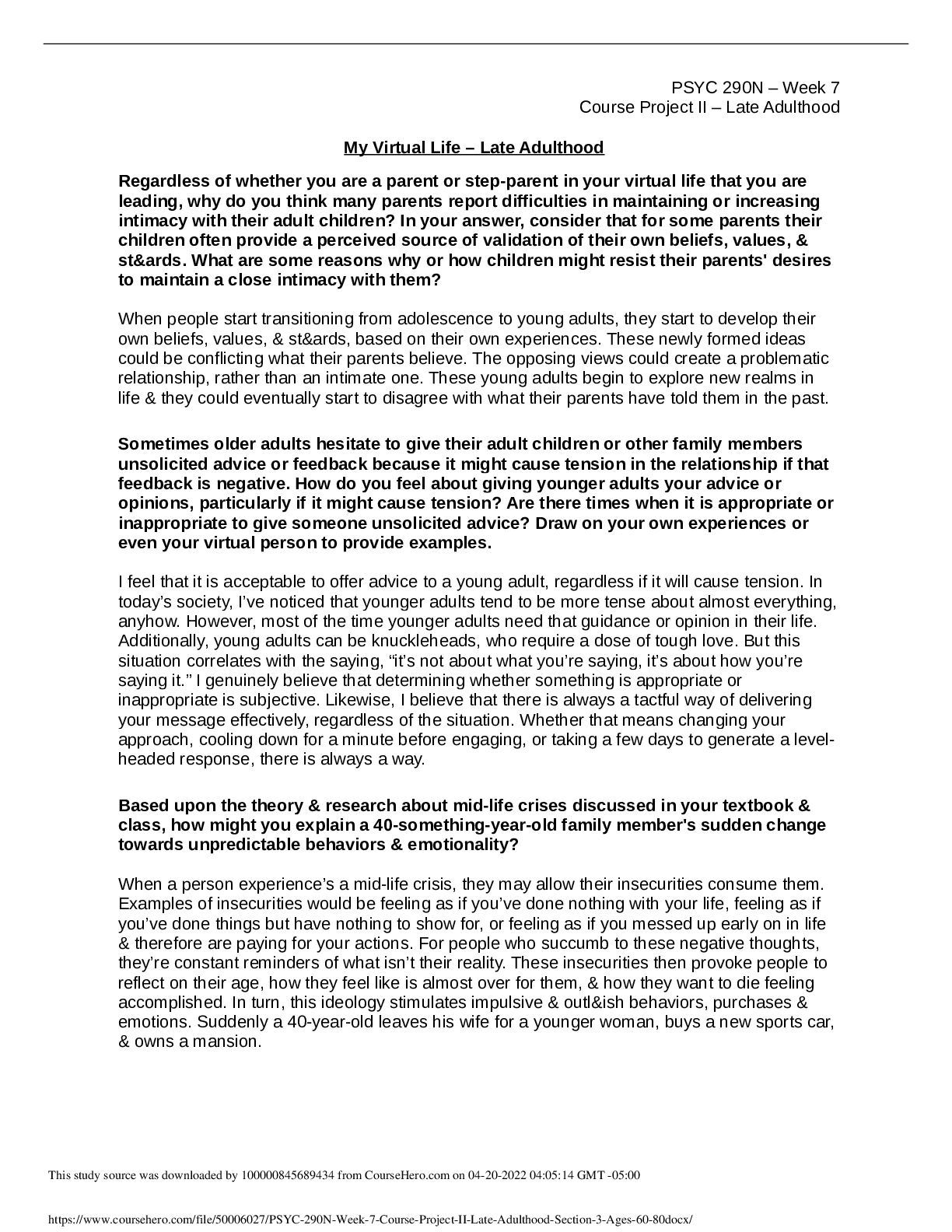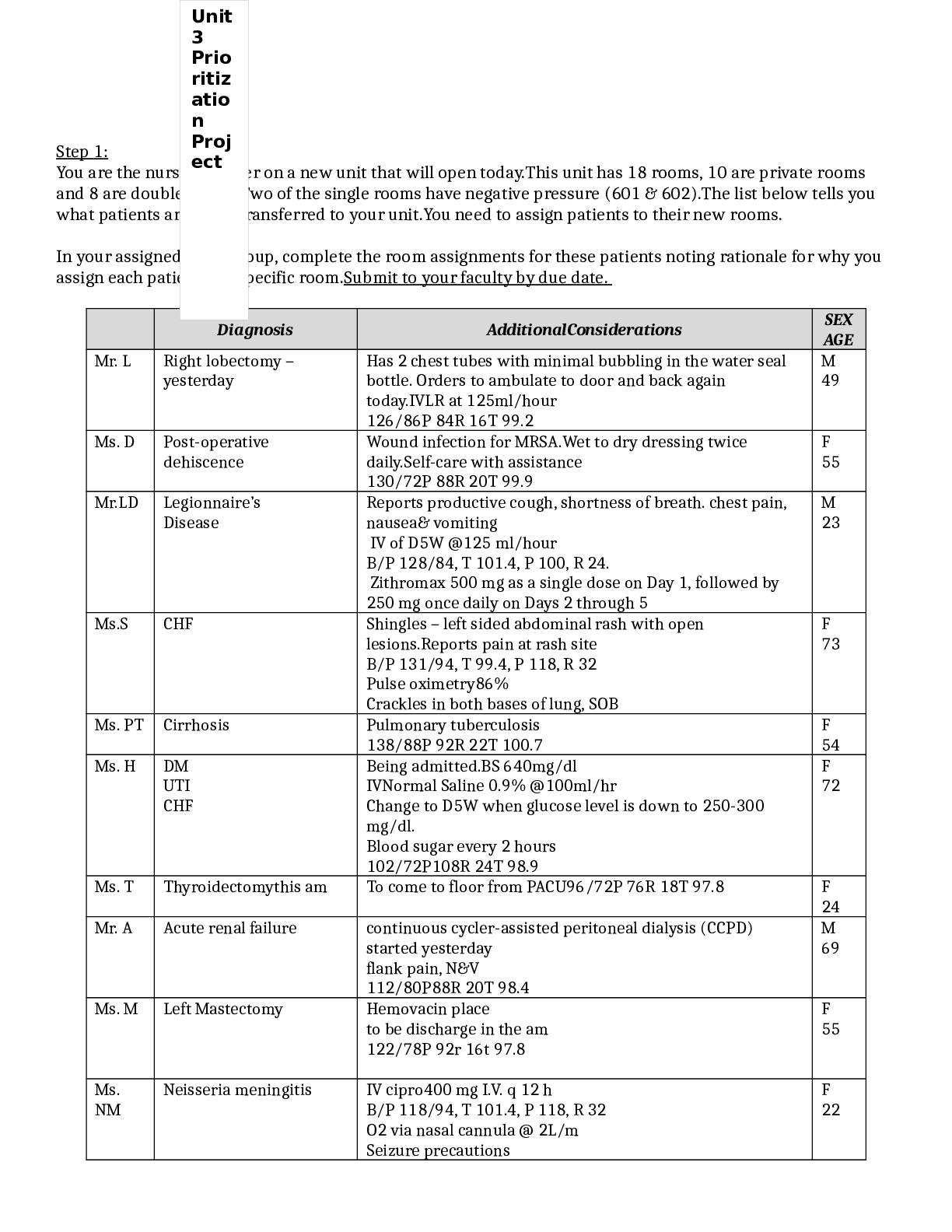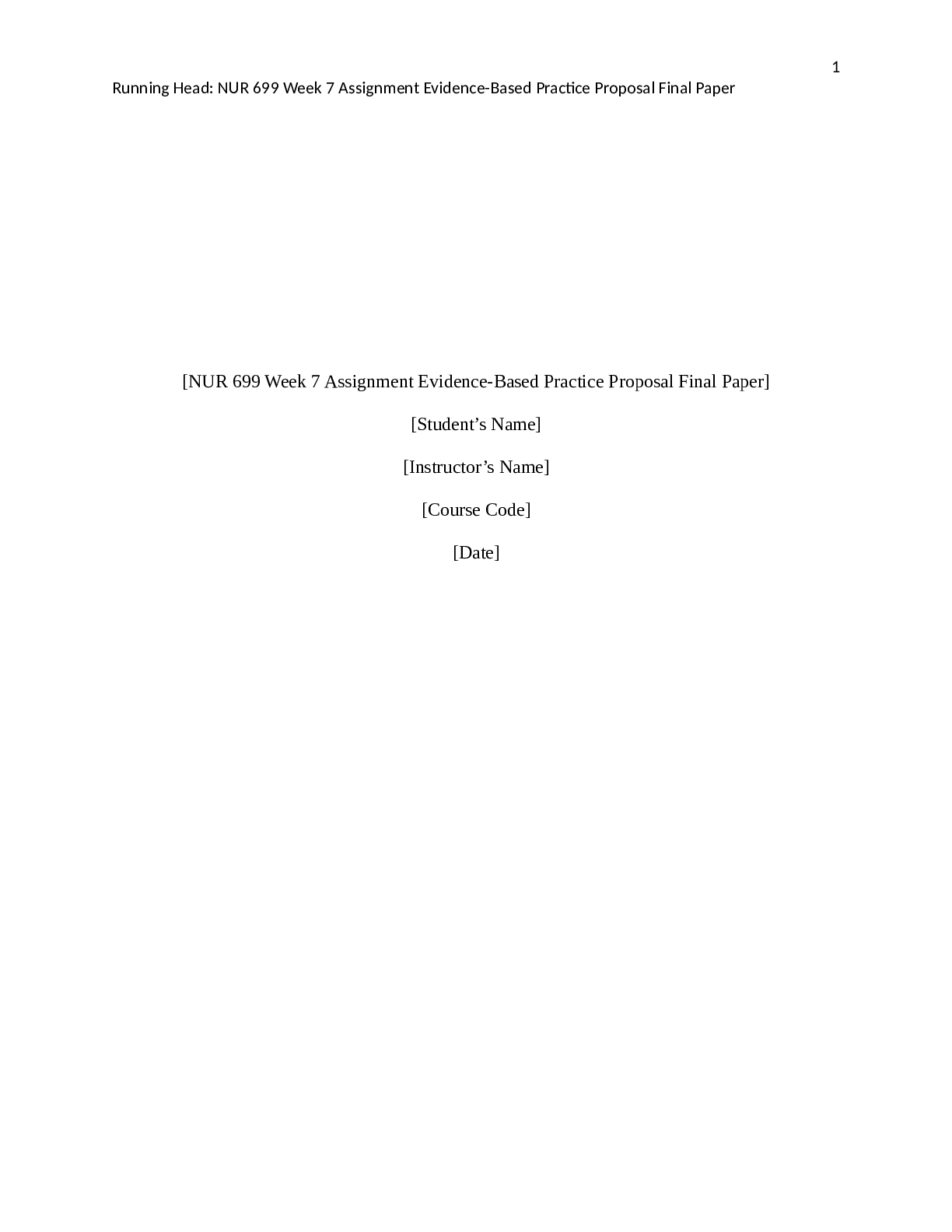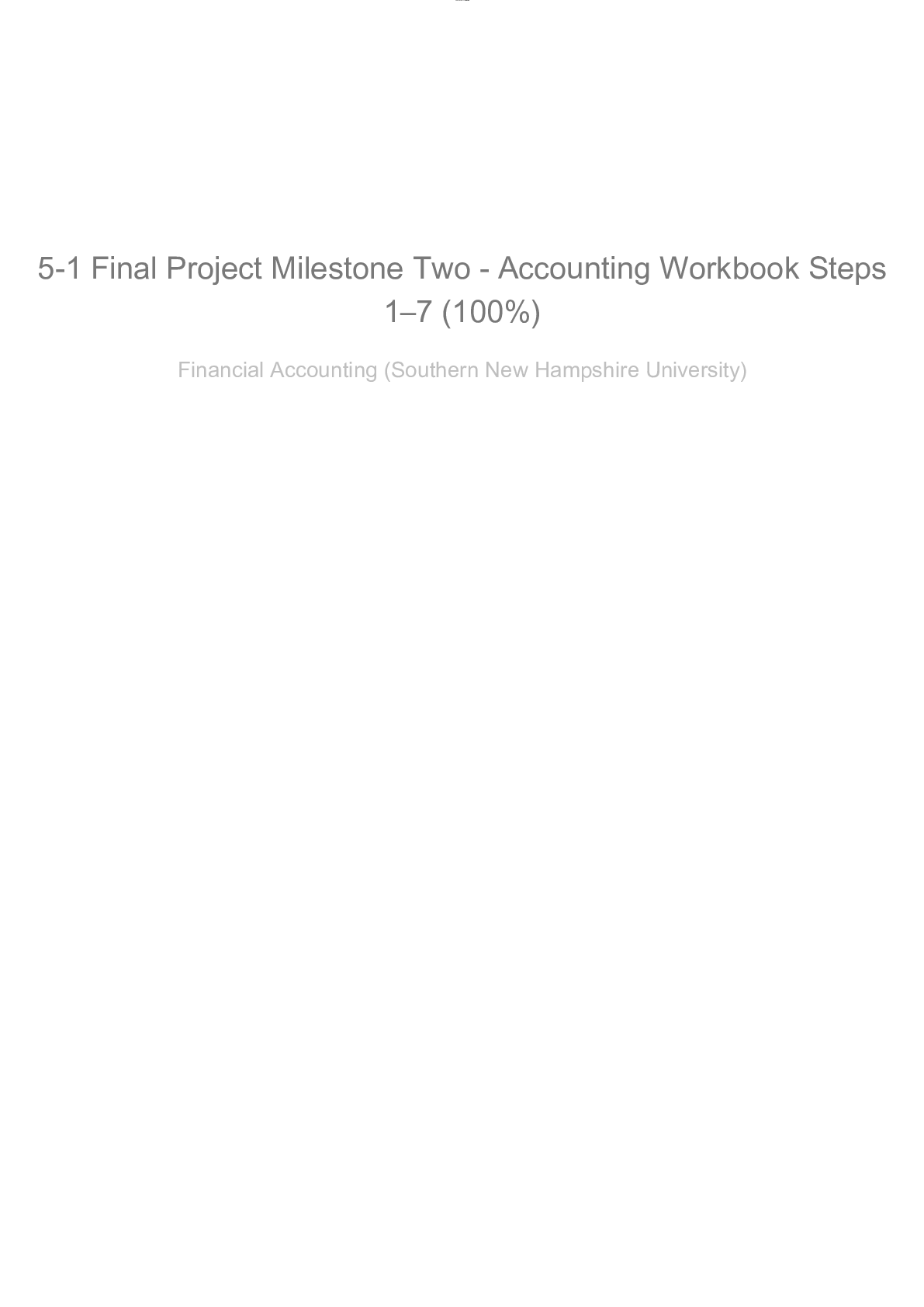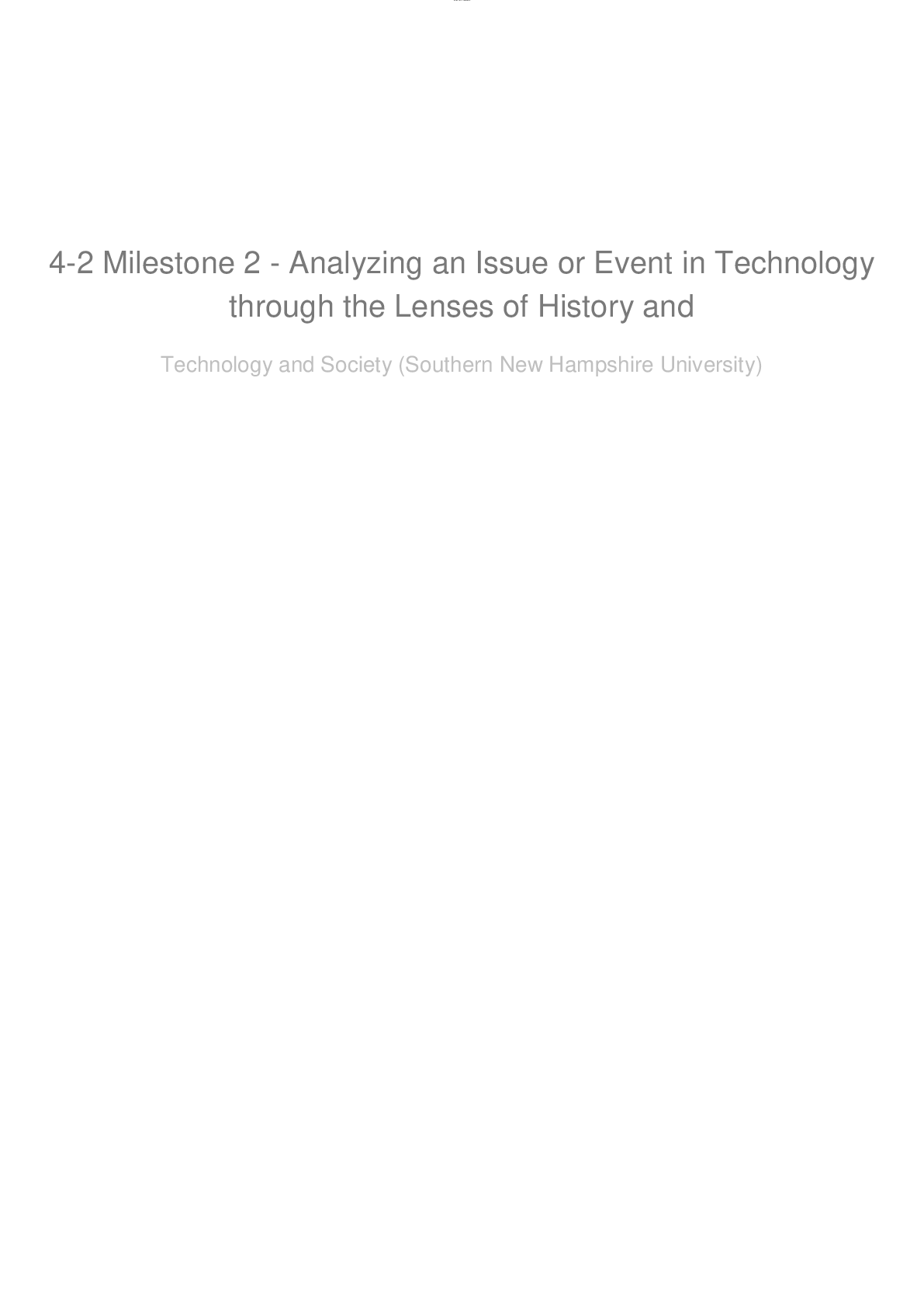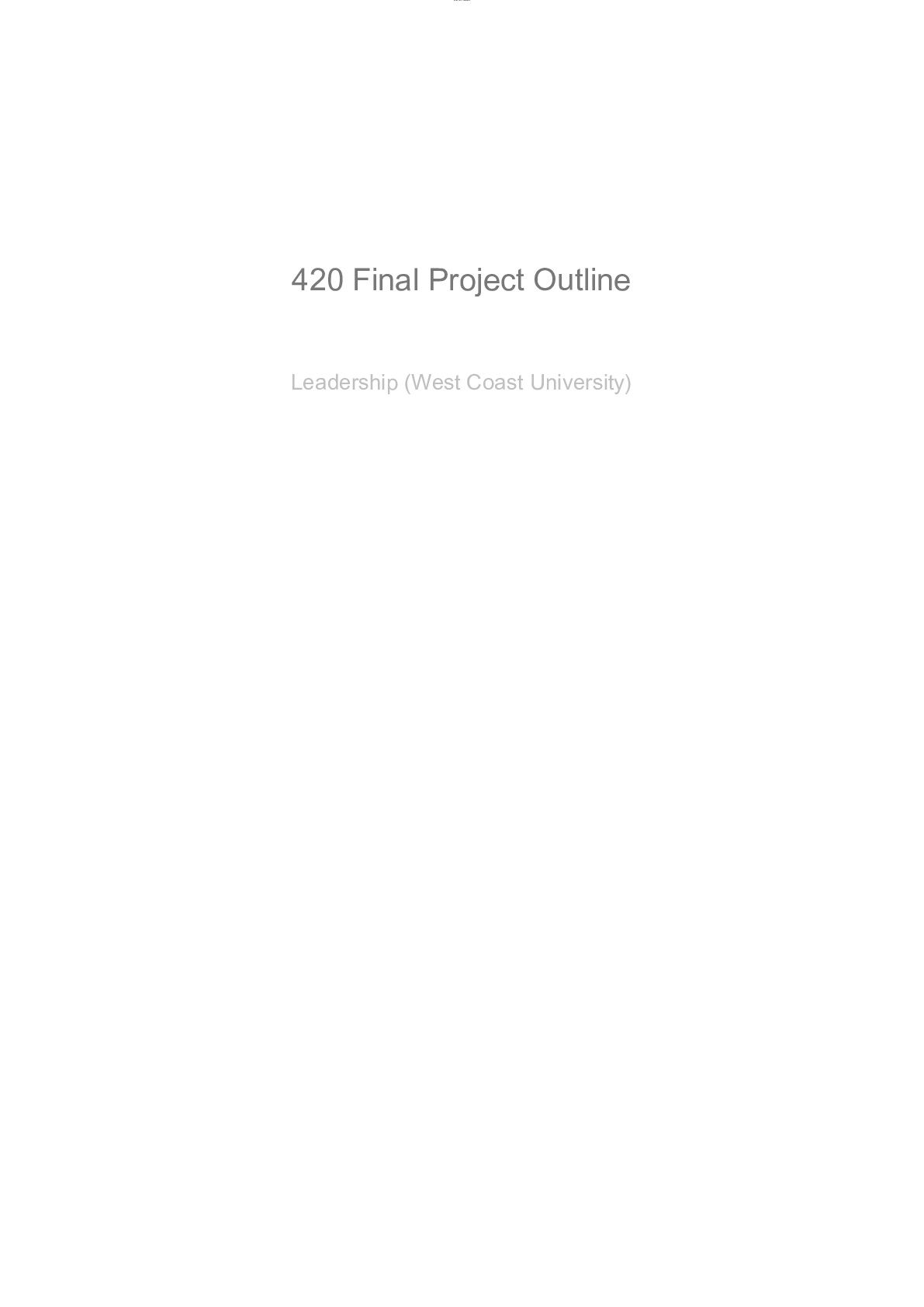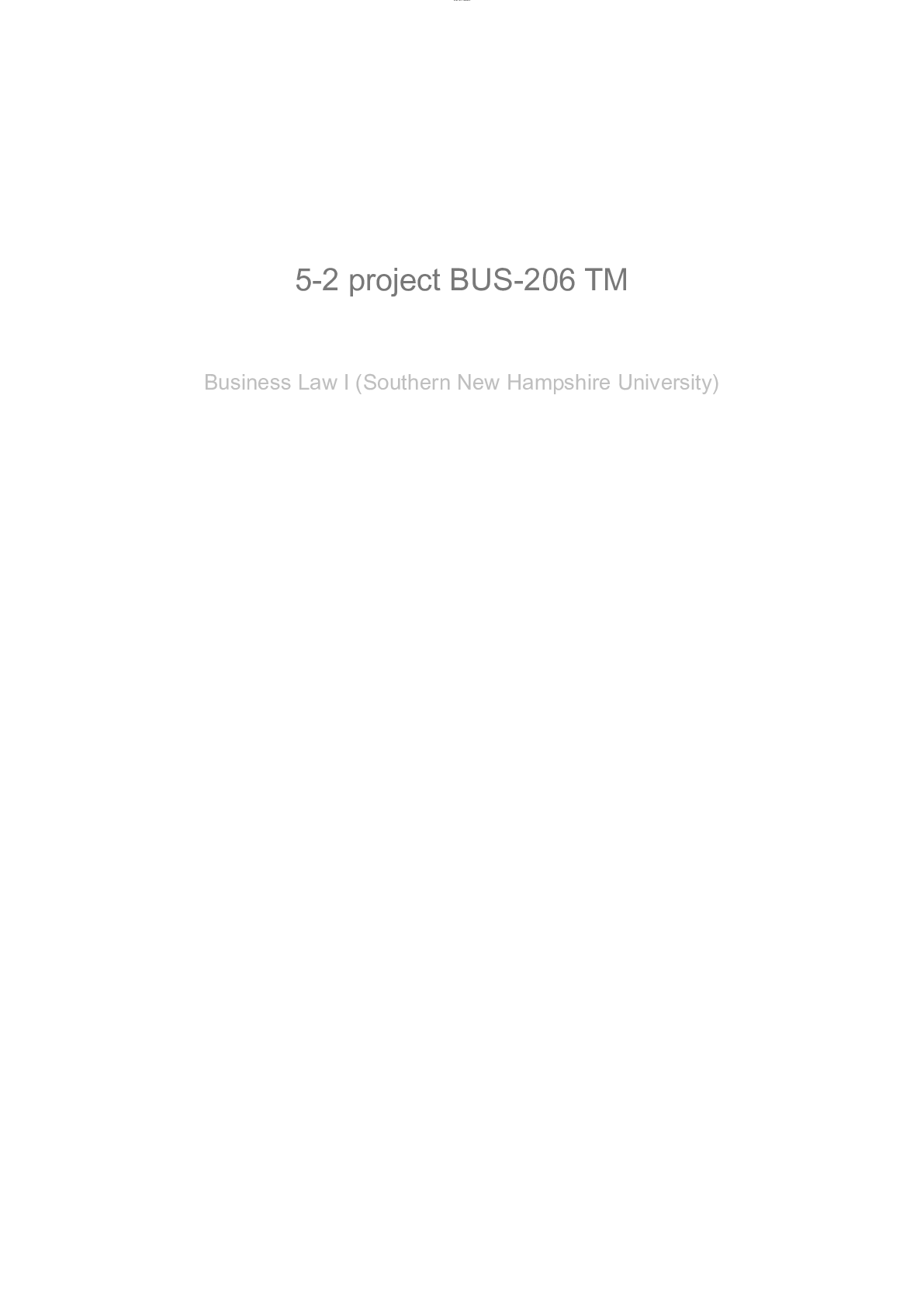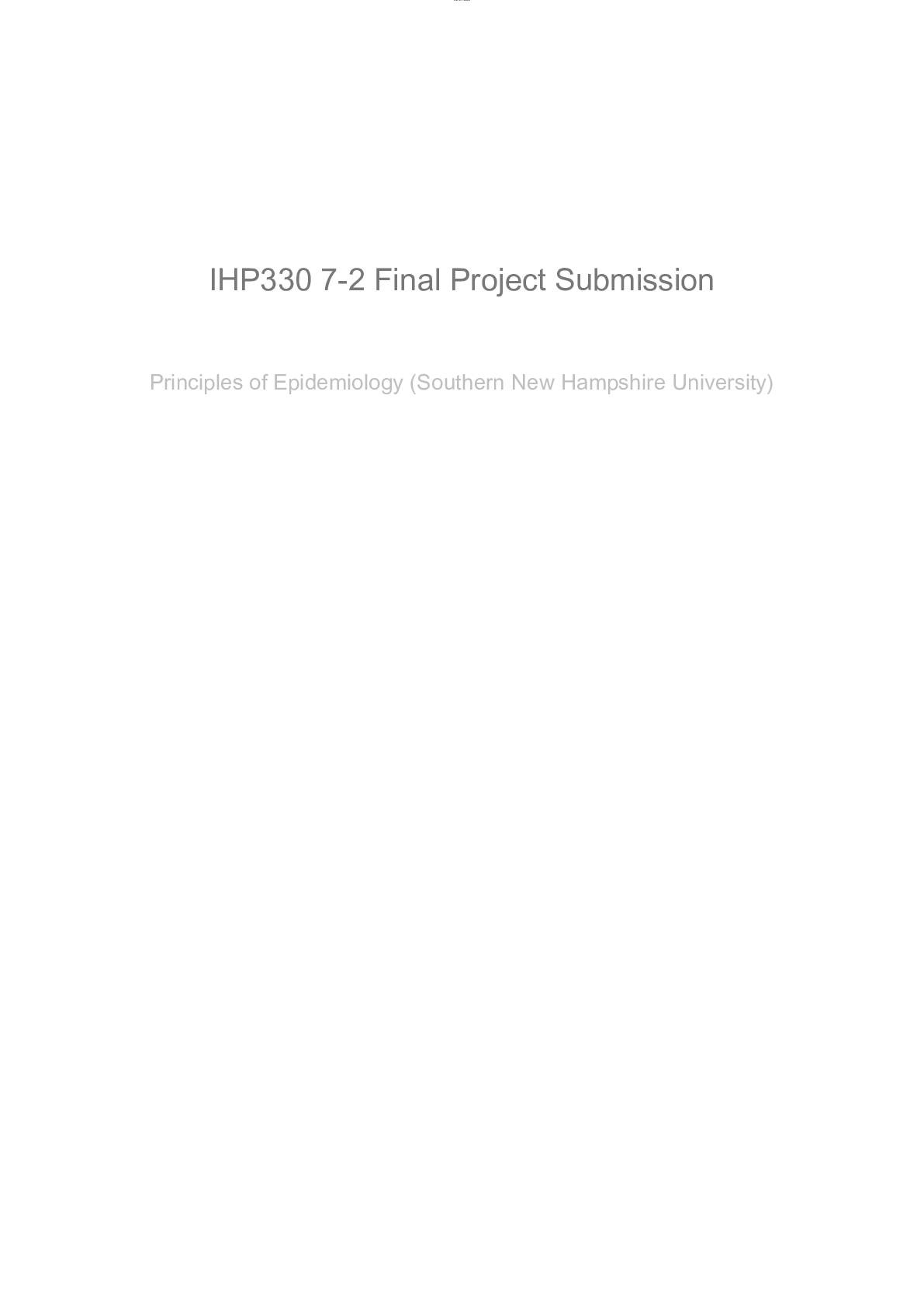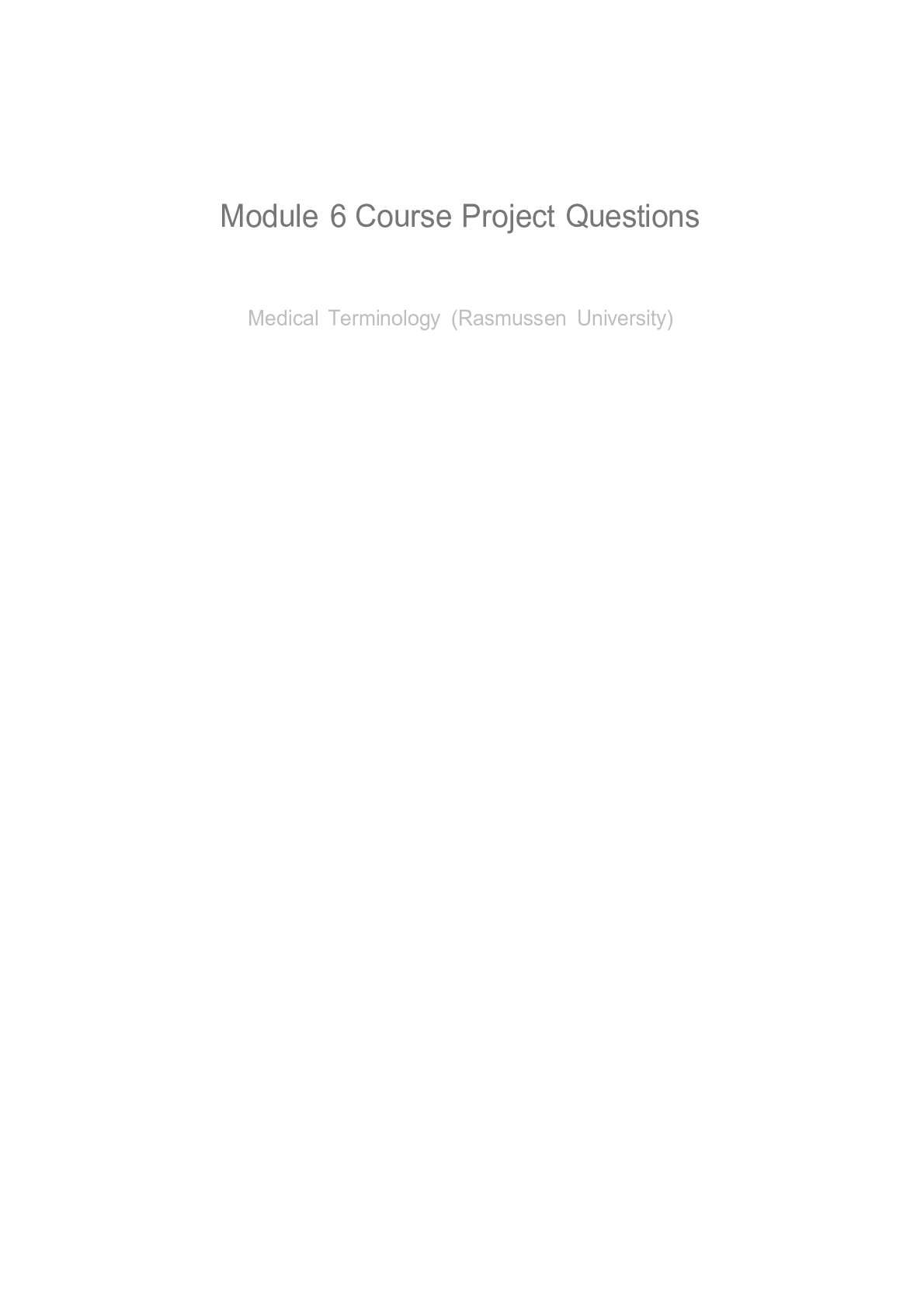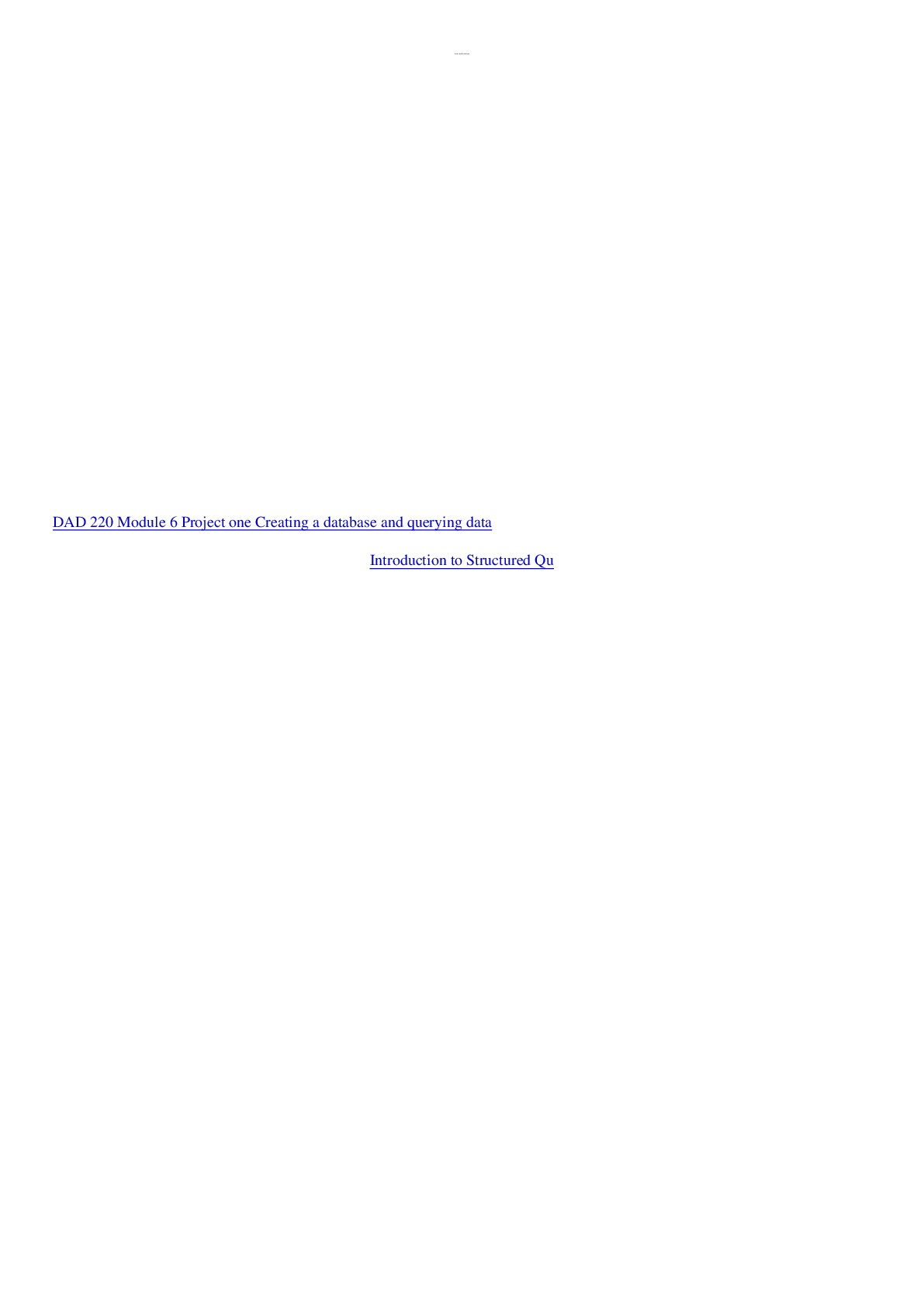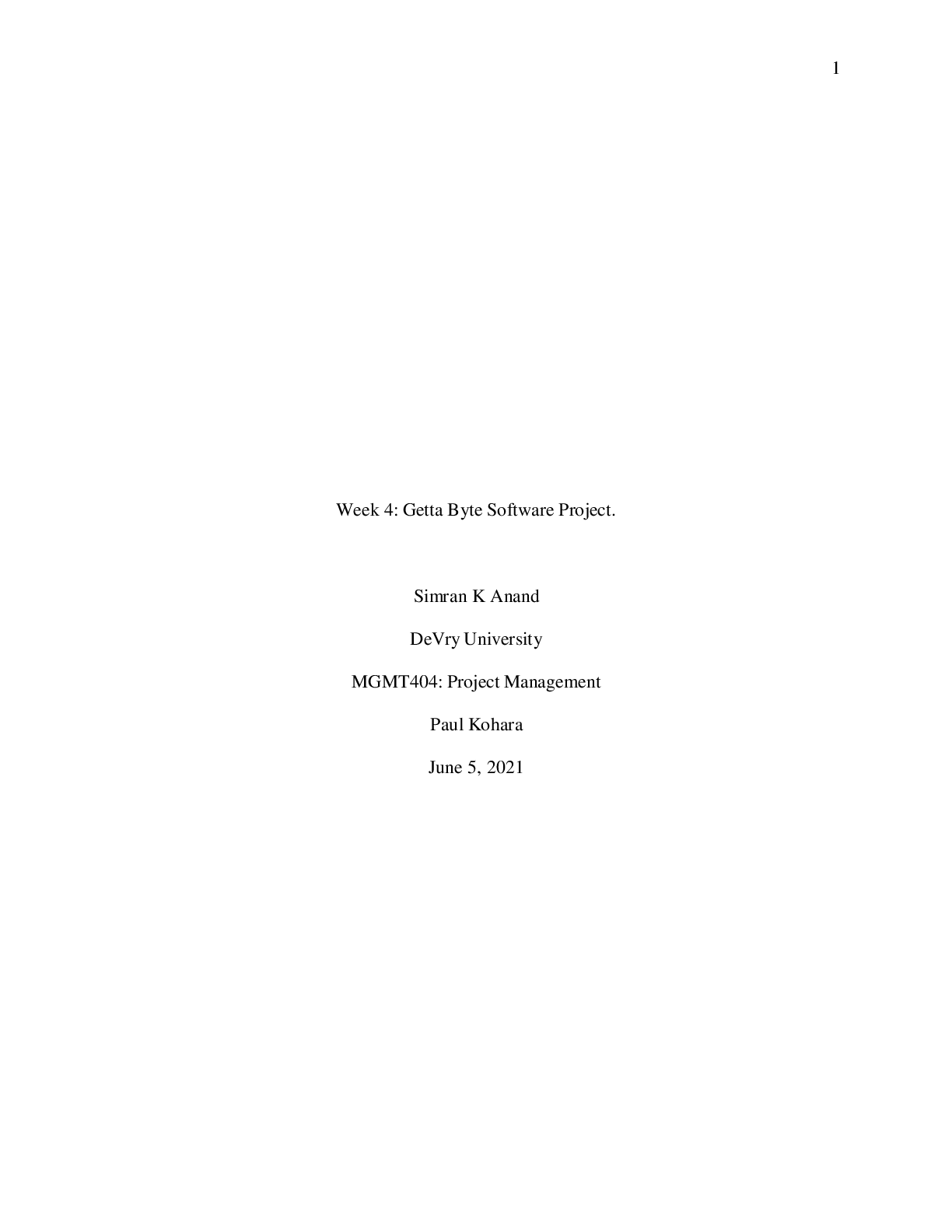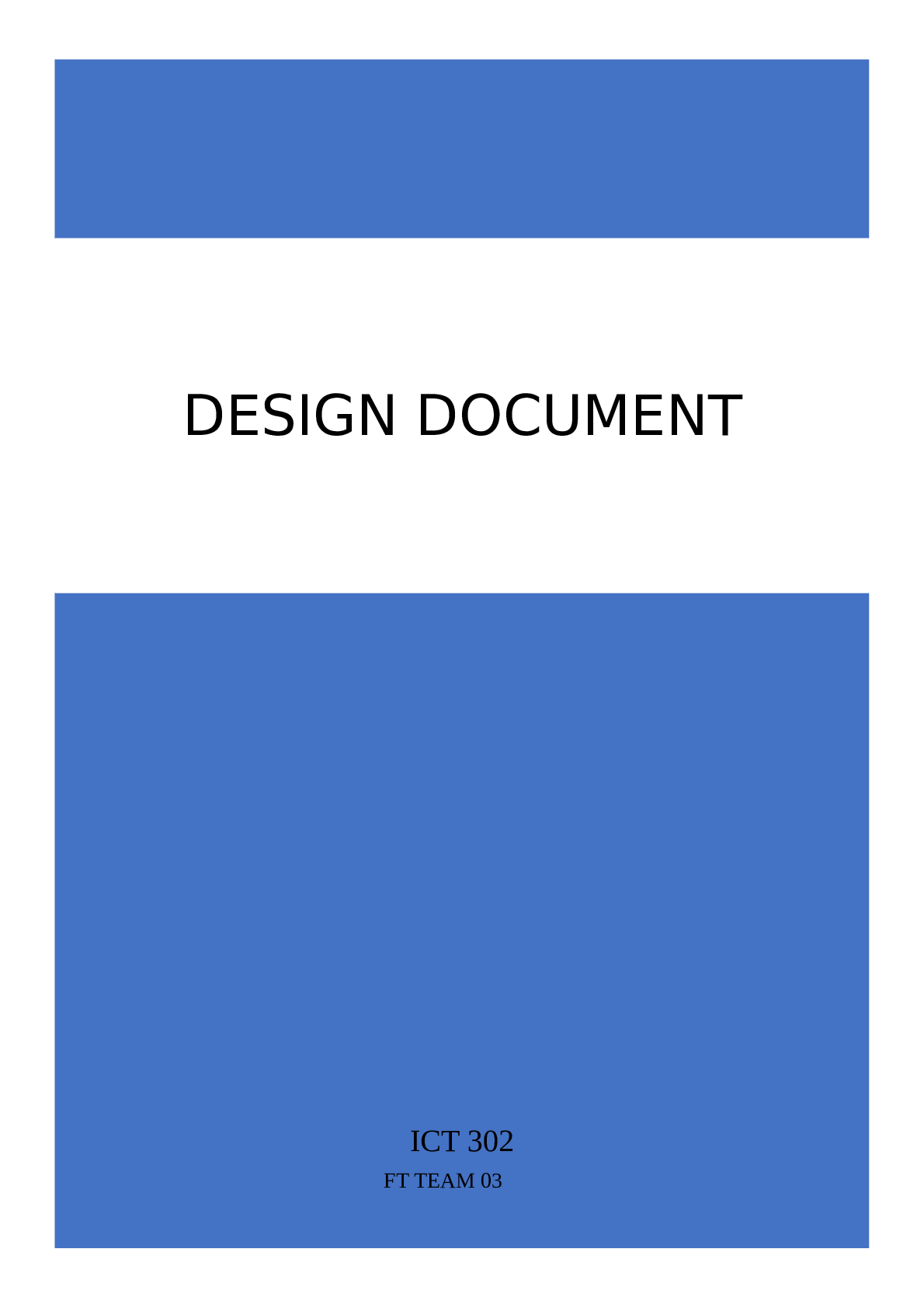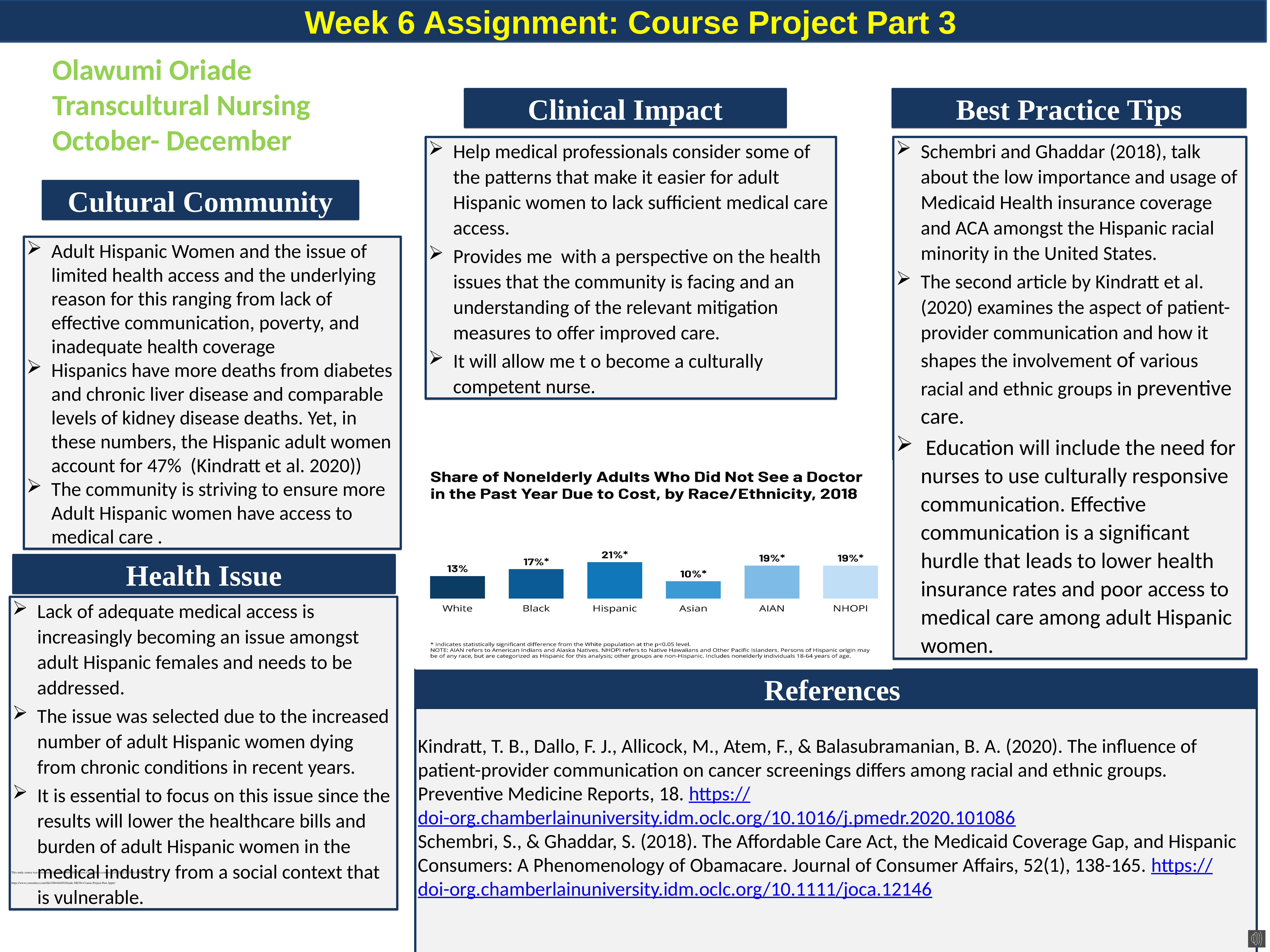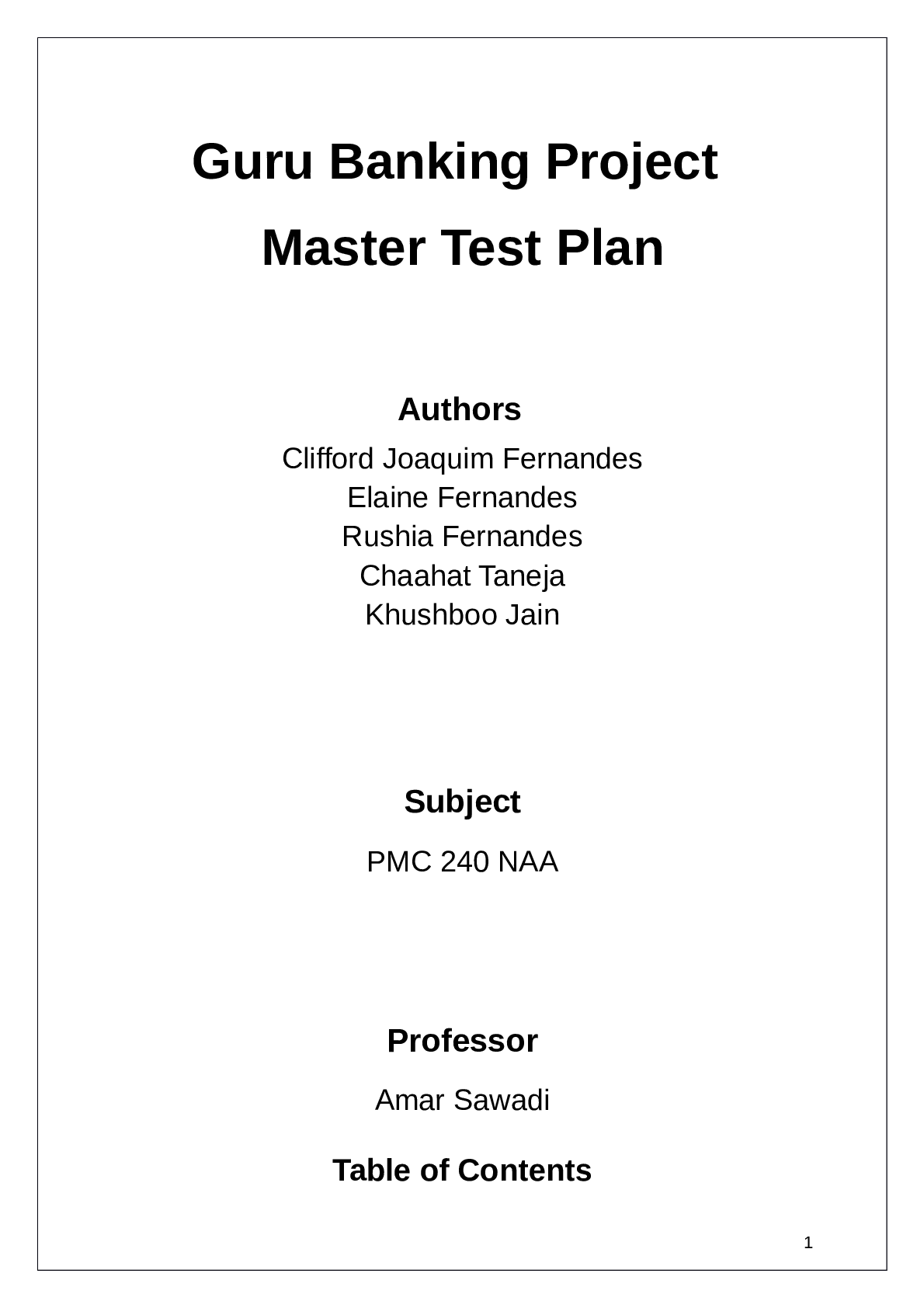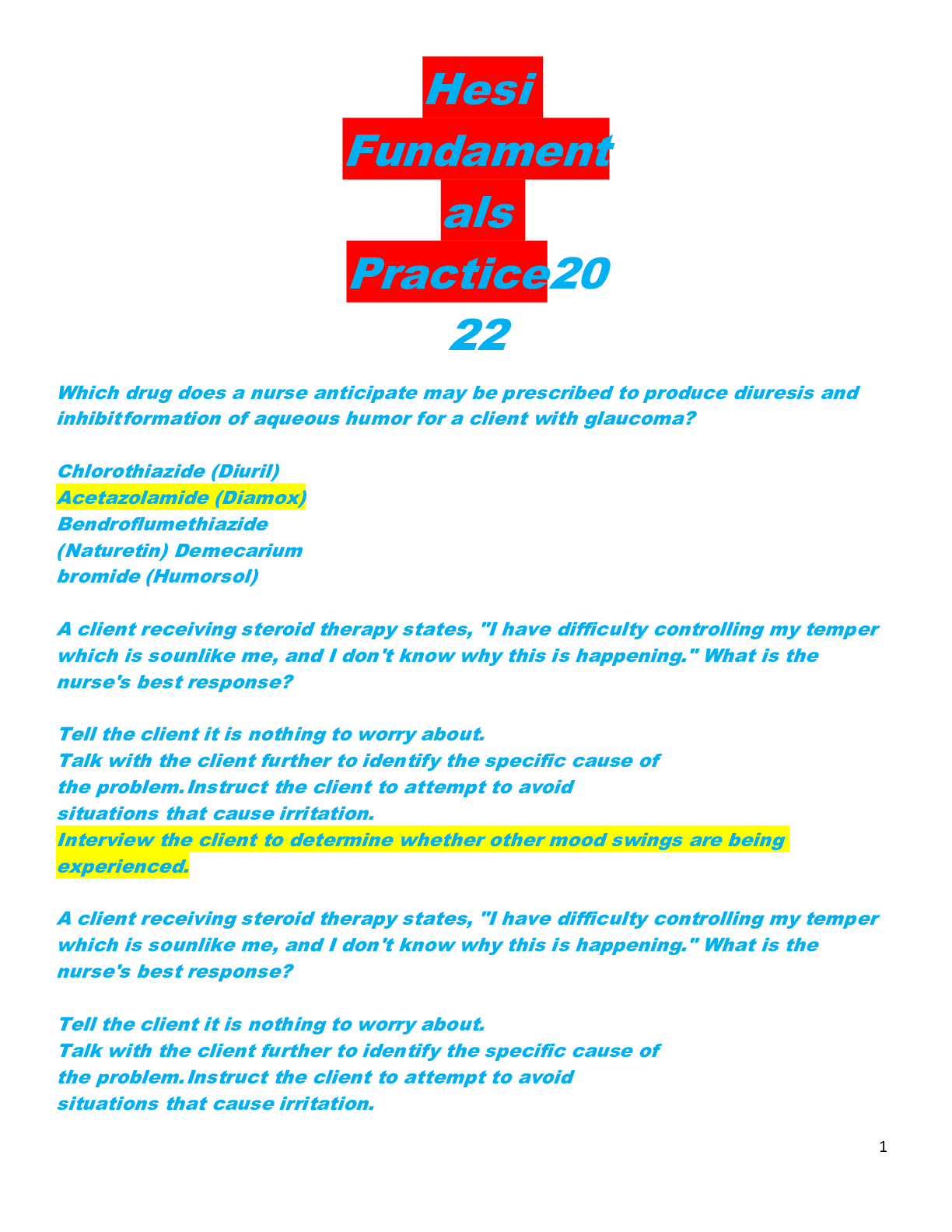Food and Nutrition > PROJECT FINAL > Food Environments and Obesity: Household Diet Expenditure versus Food Desert (All)
Food Environments and Obesity: Household Diet Expenditure versus Food Desert
Document Content and Description Below
Food Environments and Obesity: Household Diet Expenditure versus Food Desert In my reading of Food Environments and Obesity: Household Diet Expenditure versus Food Dessert and after also examining O... besity Prevalence and the Local Food Environment I have come to the conclusion that the overall purpose of the study done in the primary article was to examine the association between obesity and multiple aspects of the food environment both at home and in the neighborhood surrounding. The main hypothesis I found within the article would be for the researchers to prove that USDAScore is directly related to the US obesity epidemic. That would hypothesis would answer the overall research question of the primary article being; is the USDAScore associated with the obesity epidemic in the US? After reading the study, it is clear that this study was totally observational as there was never any implementation of outside food sources to influence any of the choices of the participants. An example of how it was totally observational was how they researchers compiled data. Data was taken from the IRi Consumer Panel, IRi MedProfiler Data, and food stores and restaurant establishment numbers collected from the US Census Bureau’s County Business Patterns. More specific data was also collected by calculating participants BMI based on the selfreported height and weight statistics given by those participating. After looking at how the data was collected and used, I can see that the data is both a quantitative as well as categorical measure. Quantitative in the sense of finding BMI numbers and categorical when the researchers This study source was downloaded by 100000796615030 from CourseHero.com on 07-18-2021 08:16:01 GMT -05:00 https://www.coursehero.com/file/30995649/IHP-340-Finaldocx/ This study resource was shared via CourseHero.com put that BMI score into a specific category to determine overweight and obese. Potential weaknesses I can see when looking at the study from an outside perspective is the fact that some of the height and weight statistics given by the participants were self-reported. If someone is embarrassed or simply trying to make themselves feel better, they may potentially lie about their height and weight without anyone conducting the study knowing. Analysis methods used by those conducting this study were mostly passive as they received reports and numbers from many of the sources that I have listed above. All data collected in the manor is was was completely appropriate from how they conducted the study because of the study being completely observational and needing to pull statistics from the way certain areas were currently living. As a result of the researchers collecting data from the areas in which they did I can once again see flaws in self-reporting. The number of people as well as the number of food sources taken into account would be accurate because there would be no deviation from established businesses or households but people reporting their own height and weight may be skewed. As far as inclusion and exclusion criteria for those participating in the study, there really were none because it was a random sample. More than 85% of the participants identified as NonHispanic White with a household size of an average of 2 and the mean household income to be above $69,000 annually. Another fact about those in the study showed that around 83% had some college, graduated from college, or were even a post college graduate. The main finding of the study was that one third of the participants were deemed overweight while one third was deemed obese, leaving the remaining one third in the normal to underweight category. The categorical findings proved that almost all of the individual-level demographics and lifestyle choices were significantly associated with obesity and overweight This study source was downloaded by 100000796615030 from CourseHero.com on 07-18-2021 08:16:01 GMT -05:00 https://www.coursehero.com/file/30995649/IHP-340-Finaldocx/ This study resource was shared via CourseHero.com status (Chen, Jaenicke, Volpe 2016 p.884). Some specifics on the categorical findings showed that age was positively associated with overweight and obesity, regular fast-food consumption was positively associated with obesity but not necessarily overweight status, and regular exercise was not related to obesity and overweight status amongst the individuals in the study. When dealing with the categorical side of looking at the results as far as ethnicity, African Americans were more likely to be overweight or obese, Asians had the lowest probability of being overweight or obese, and Non-Hispanic Whites were in the middle. One glaring limitation of the study was the skewed ethnic demographics that were presented in the percentages of the ethnic groups in the study. With 85% of the study being NonHispanic Whites, it was hard to gather a lot of evidence about any other of the ethnicities. Another limitation that may have been put on the researchers was the overall size of the study. With 38,650 individuals in the study, it is very possible that some of the information could have been lost or even misinterpreted. Although the researchers are very adapt to be able to handle a sample size of this magnitude, human error is always present. Even though the ethnic demographic may have been skewed, it can definitely serve as a useful tool when looking at the Non-Hispanic white community because there was such a large part of the study done on that group in general. That is both an advantage and a disadvantage but may serve as a key finding when looking into the limitations of the study design. Even though the study looked at many individuals in many different counties, a follow up study may want to choose the counties more specifically as to even out the ethnic findings. Results from this study showed that the adult sample BMI of 28.5 had a very strong correlation to a similar study titled Prevalence of Obesity and Trends in the Distribution of Body Mass Index Among US Adults that showed a BMI of 28.7 (Flegal, Carroll, Kit 2012). Even This study source was downloaded by 100000796615030 from CourseHero.com on 07-18-2021 08:16:01 GMT -05:00 https://www.coursehero.com/file/30995649/IHP-340-Finaldocx/ This study resource was shared via CourseHero.com though that specific study looked at a much smaller sample size (less than 10,000) the average BMI remained almost identical. That goes to show that statistics from even a sample size less than one third of the one presented still shows similar findings. Overall, this study contributes to scientific literature by bringing in a massive sample size and using a large list of external sources to come up with the best findings it can. It uses many well renowned sources to pull information from and uses a non-biased way of comparing empirical evidence to get the most precise and exact data. Further investigations could look at a larger ethnically diverse group of individuals. The researchers could hand pick certain communities with a larger diversity and compare what they find with the findings from this specific study. This study source was downloaded by 100000796615030 from CourseHero.com on 07-18-2021 08:16:01 GMT -05:00 https://www.coursehero.com/file/30995649/IHP-340-Finaldocx/ This study resource was shared via CourseHero.com References Chen, D. & Jaenicke, E.C. & Volpe, R.J., 2016. "Food environments and obesity: Household diet expenditure versus food deserts," American Journal of Public Health, American Public Health Association, vol. 106(5), pages 881-888. Ogden CL, Carroll MD, Kit BK, Flegal KM. Prevalence of Obesity and Trends in Body Mass Index Among US Children and Adolescents, 1999-2010. JAMA. 2012;307(5):483–490. doi:10.1001/jama.2012.40 [Show More]
Last updated: 1 year ago
Preview 1 out of 24 pages
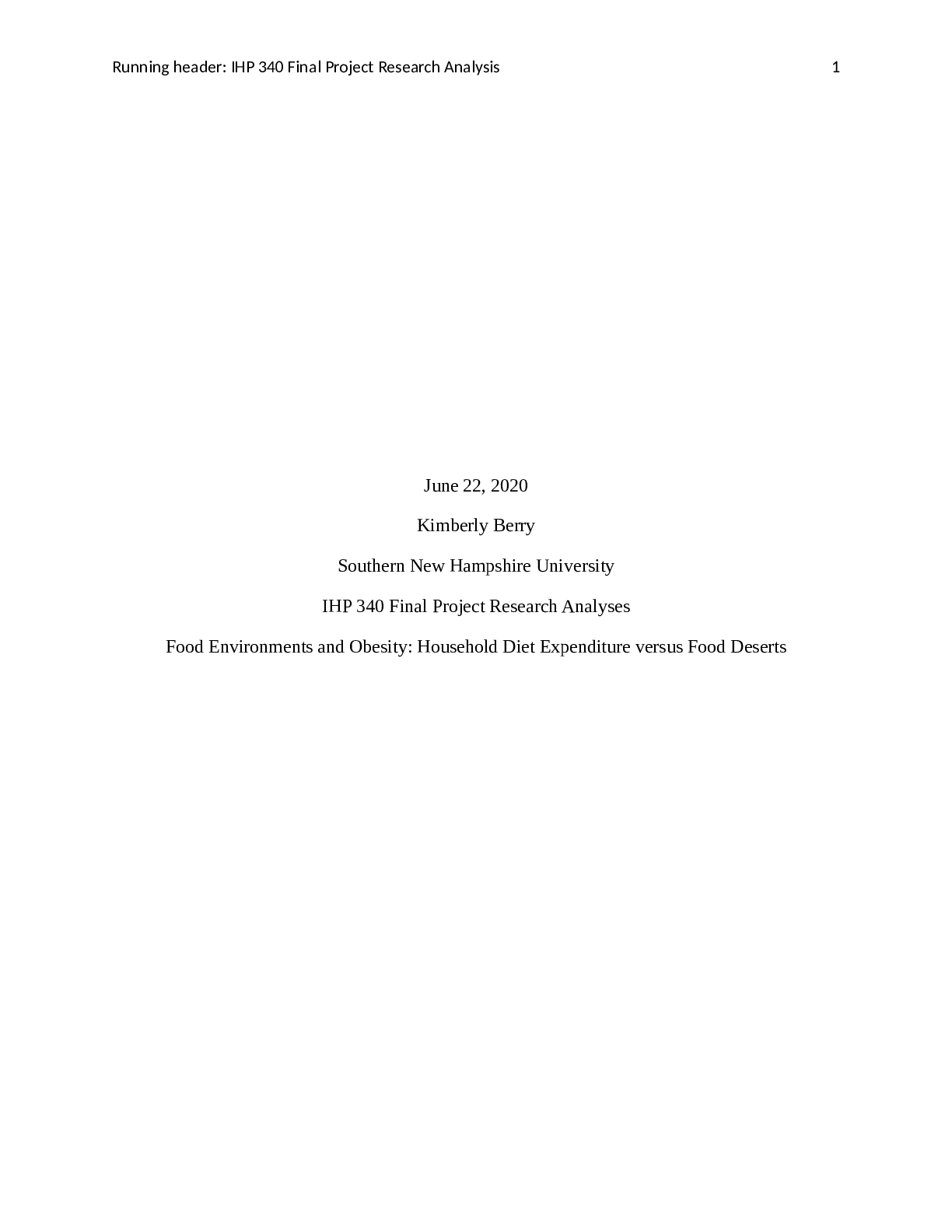
Reviews( 0 )
Document information
Connected school, study & course
About the document
Uploaded On
Jul 18, 2021
Number of pages
24
Written in
Additional information
This document has been written for:
Uploaded
Jul 18, 2021
Downloads
0
Views
61

